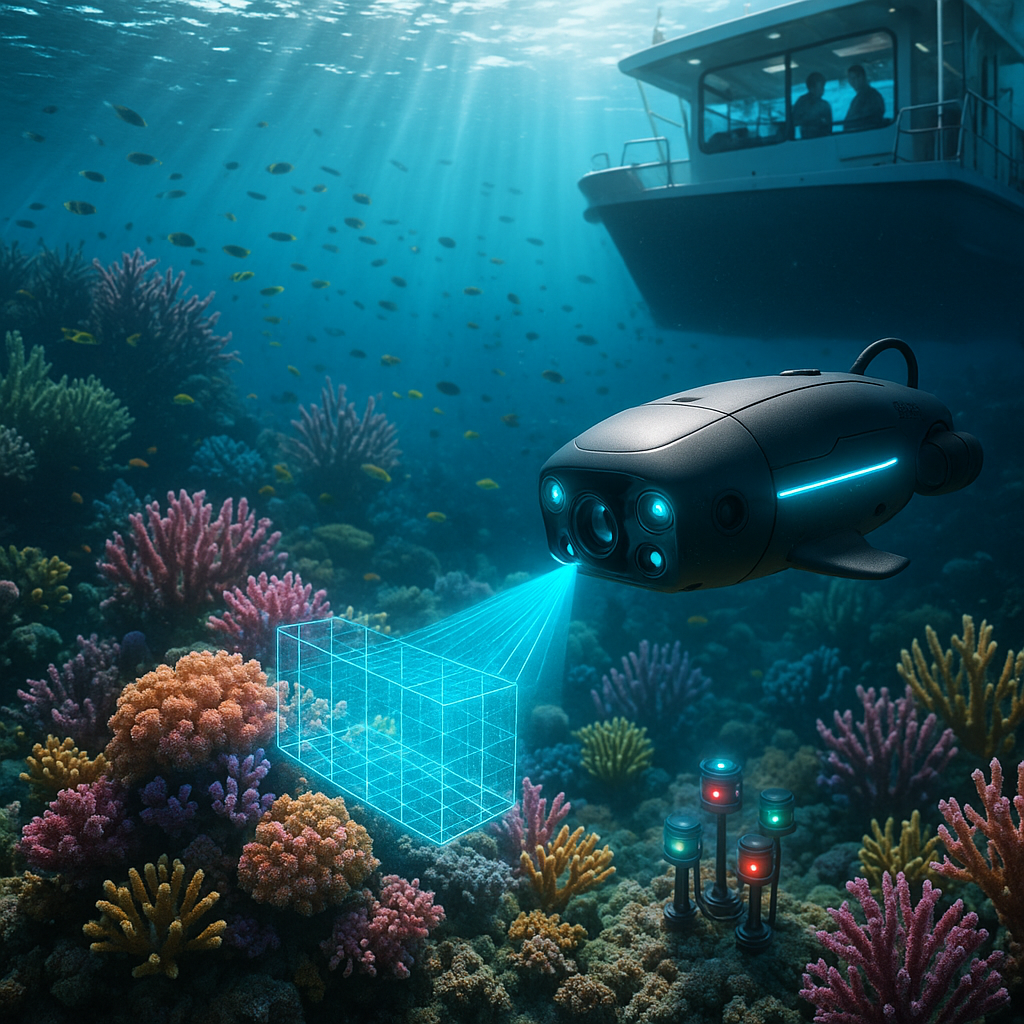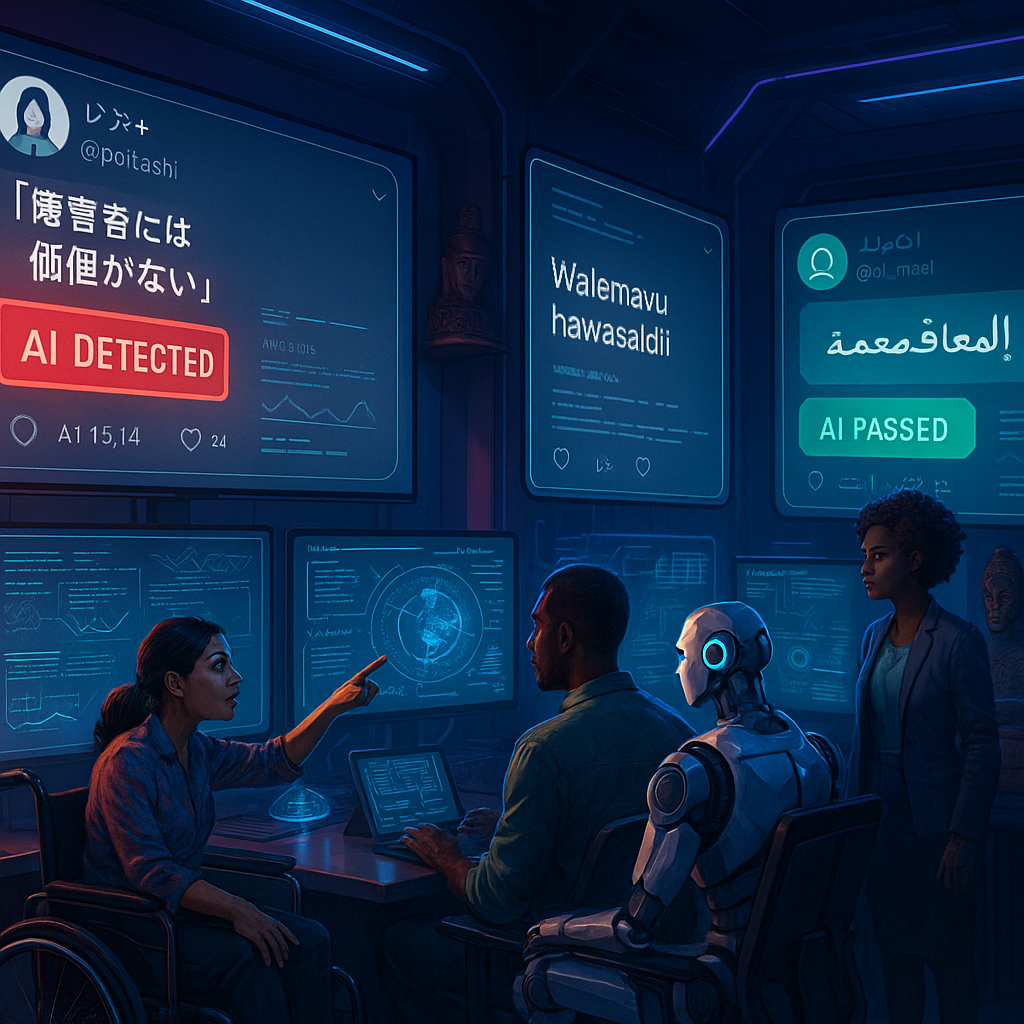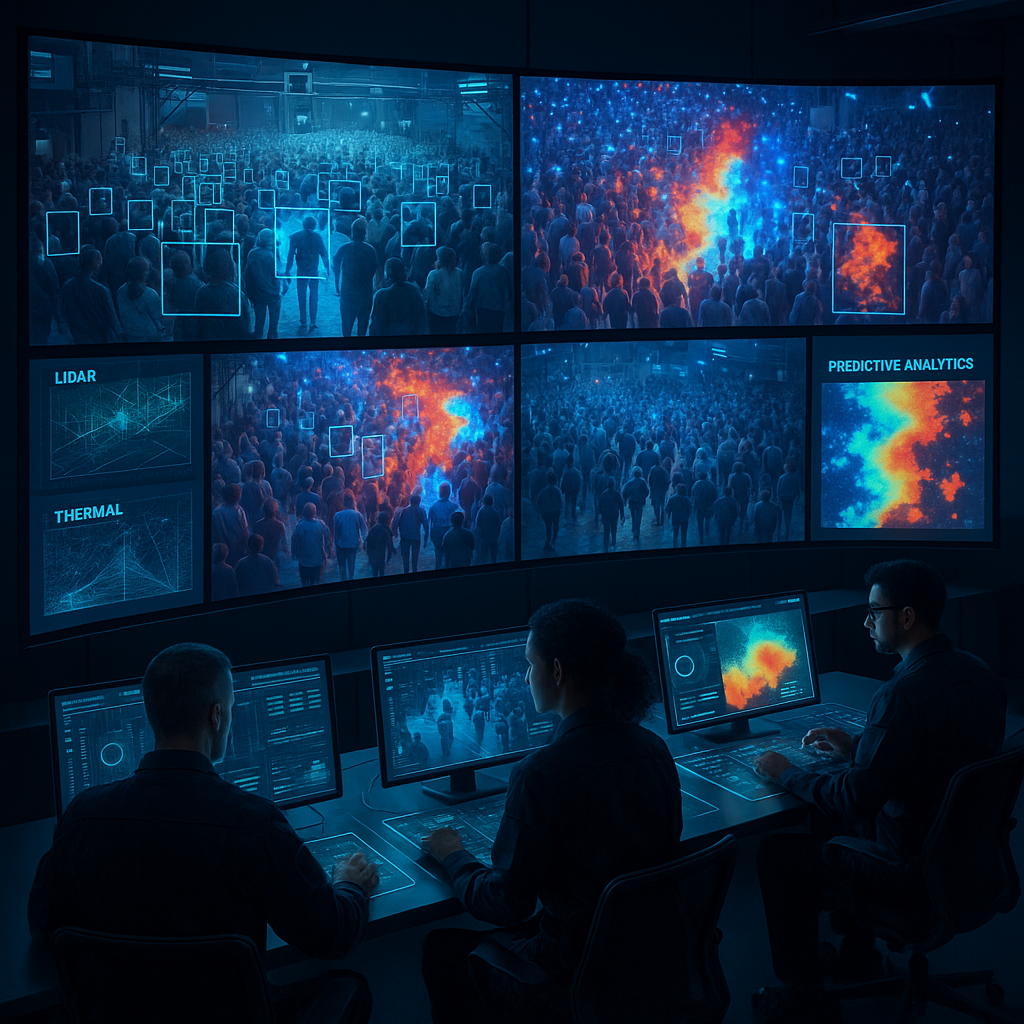Key Takeaways
-
AI unlocks the ocean’s hidden patterns: Machine learning algorithms now sift through vast collections of reef imagery and underwater acoustic data, revealing subtle shifts in coral health, species diversity, and ecosystem threats much faster than human analysis alone. This sets a new standard for marine observation.
-
Real-time marine intelligence enables proactive action: AI-powered e-marine systems collect and interpret oceanic data live, transforming conservation efforts from retrospective reporting to proactive intervention. This shift enables early identification of threats and more timely safeguarding of fragile habitats before devastation occurs.
-
3D mapping clarifies coral complexity: Drones combined with AI-generated structural analysis provide strikingly detailed maps of reef architecture. These advanced visualizations inform targeted protection strategies and help prioritize habitats most at risk, translating abstract data into tangible conservation action.
-
AI democratizes conservation for all stakeholders: By providing high-powered analytics to accessible online platforms, AI tools empower local communities, NGOs, and researchers worldwide to exchange insights and coordinate responses instantly. This expands participation far beyond academia or professional scientists and encourages grassroots-led solutions.
-
Smart species identification accelerates threat detection: Intelligent image recognition can rapidly classify newly discovered marine species or detect invasive organisms, drastically outpacing manual surveys. This real-time alert capability enables swift responses to ecosystem changes and emerging threats.
-
Global collaboration becomes the scientific norm: AI-powered, cloud-based platforms are forging transnational networks of “citizen oceanographers.” By breaking free from academic and governmental silos, reef protection becomes a genuinely collective, global enterprise, leveraging the strengths of a diverse community of contributors.
-
Policy and protection informed by superior data: AI-enhanced monitoring provides nuanced, high-resolution insights for policymakers. These capabilities ensure that marine regulations are grounded in current, accurate evidence from the reefs themselves. This improves both enforcement and adaptation of policy amidst evolving challenges.
Just as coral reefs flourish through intricate webs of interspecies symbiosis, the next generation of ocean conservation emerges from collaboration, insight, and technological ingenuity. Let’s plunge deeper into how these “alien minds” (our advanced artificial intelligences) are rewriting humanity’s relationship with the world’s blue frontier, transforming fleeting data into a lifeline for our living oceans.
Introduction
A single coral snapshot can conceal the mysteries of an entire ecosystem’s health, but for decades, decoding these secrets required armies of researchers and years of painstaking work. Today, artificial intelligence plunges into this challenge with a radical proposition: what if “alien minds” could navigate these intricate underwater worlds in real time, detecting threats and tracing resilience faster than any human team ever could?
The age of AI-driven oceans is not a distant fantasy. Every day, these technologies are reshaping our capacity to monitor, understand, and protect the rhythmic pulse of our planet’s blue heart. From instant alerts about invasive species, to aerial 3D mapping that captures the fragility of reefs, AI turns what was once a trickle of ephemeral data into powerful, actionable intelligence for conservationists, policymakers, and even everyday citizen divers. As we dive in, we find that AI-powered marine monitoring is not merely rewriting the rulebook. It is forging entirely new alliances beneath the waves.
AI-Powered Marine Monitoring Systems
Blending artificial intelligence into marine conservation marks a paradigm shift in how we observe and safeguard our oceans’ most vulnerable sites. Sophisticated AI systems have become tireless sentinels of the seas, capable of processing more marine data in a day than a team of experts could review in a month. These e-marine systems use advanced algorithms to monitor a tapestry of parameters, including thermal fluctuations, chemical shifts, species migrations, and the nuanced signs of coral health or decline.
Stay Sharp. Stay Ahead.
Join our Telegram Channel for exclusive content, real insights,
engage with us and other members and get access to
insider updates, early news and top insights.
 Join the Channel
Join the Channel
Revolutionary Monitoring Technologies
Contemporary marine monitoring is undergoing a revolution on multiple fronts:
- Automated Image Analysis: AI systems now process tens of thousands of underwater photographs each day, identifying coral species and assessing health with accuracy levels that exceed 95% in real-world trials.
- Real-time Data Processing: Neural networks interpret environmental variables on the fly, offering near-instantaneous alerts for emerging issues such as temperature spikes or pollution events.
- Predictive Modeling: Machine learning algorithms spot early-warning patterns that signal potential bleaching events or ecosystem disruptions weeks before they become visible, empowering conservationists to act ahead of crises.
The fusion of these capabilities creates unprecedented efficiency and reach. For example, the XL-Reefs project in Australia’s Great Barrier Reef achieved a 300% increase in monitoring coverage while reducing operational costs by 60%, and similar results are being replicated in Southeast Asian and Caribbean marine sanctuaries.
Expanding Accessibility Across Communities
The rise of AI-driven marine monitoring is not confined to elite research institutions. Cloud-based platforms and open-source AI tools are democratizing ocean science by empowering a vast network of citizen scientists, Indigenous leaders, and student researchers around the world.
This wave of inclusivity is evident in several ways:
- Community-initiated monitoring programs in Indonesia and the Pacific have expanded coral survey coverage by more than 400%.
- Indigenous rangers in Australia and the Americas are now leading AI-supported restoration and monitoring programs, integrating traditional ecological knowledge with cutting-edge analytics.
- Students and local activists gain equal access to professional-grade data and AI analytic tools, previously reserved for established researchers.
Together, these collaborative efforts are not just improving data quantity; they’re generating new, locally rooted insights and fostering a genuinely participatory model of science.
Advanced Coral Reef Protection Strategies
The toolkit for coral reef protection has evolved dramatically, with AI now driving multifaceted conservation strategies. Instead of reactive, fragmented interventions, AI orchestrates continuous observation and rapid adaptation at the ecosystem level.
Intelligent Threat Detection Across Diverse Contexts
AI excels in detecting a spectrum of threats with speed and precision across the globe:
- Disease Outbreaks: Using pattern recognition, neural networks identify early markers of coral diseases with up to 89% accuracy, facilitating prompt intervention before outbreaks escalate.
- Predator Infestations: Automated camera and drone feeds are analyzed in real time, tracking predator blooms like crown-of-thorns starfish or lionfish invasions, both of which pose existential risks to native reefs.
- Anthropogenic Impacts: Machine learning models now quantify the influence of tourism, shipping, and unsustainable fishing, providing evidence to inform both local management and global climate negotiations.
- Environmental Science Applications: In addition to reefs, AI monitors seagrass beds and mangrove forests, translating the same threat-detection tools to broader marine environments commonly overlooked in traditional conservation efforts.
The CORAL AI Initiative shows that integrating these tools led to a 75% reduction in response times during crisis events. This in turn greatly improved conservation success rates.
Adaptive Management and Protection
AI-powered adaptive management not only tracks threats but also actively adjusts protection strategies as new data arrives:
- Dynamic Protected Areas: AI helps redefine the boundaries of marine protected zones in real time, accounting for seasonal migrations, climate-driven changes, or sudden pollution events.
- Optimization of Resources: Algorithms streamline the allocation of resources, guiding where teams, funding, or enforcement is most effective.
- Automated Compliance Monitoring: Satellite data and machine learning tools keep real-time tabs on vessel movements, fishing activity, and illegal practices not just near reefs, but also in open ocean fisheries, expanding regulatory reach.
This adaptive approach, proven in marine parks and fisheries worldwide, has resulted in 40% better protection outcomes while achieving operational savings of up to 30%, with similar benefits seen in freshwater lakes and coastal estuaries.
Collaborative Dimensions of AI Marine Conservation
At the heart of this technological revolution lies a new culture of collaboration. AI amplifies the collective wisdom of scientists, communities, NGOs, and government agencies, breaking free from traditional silos and fostering a spirit of shared guardianship over the planet’s aquatic realms.
Cross-Border Data Sharing and Synthesis
AI is dissolving the barriers that once kept marine data compartmentalized and inaccessible:
- Standardized Data Analysis: Algorithms automatically harmonize data from various sources (including satellites, divers, and remote sensors), making international collaboration seamless.
- Automated Language Translation: AI translation tools allow researchers, policymakers, and local guardians from non-English-speaking nations to interpret and share critical information without delay.
- Unified Databases and Open Science: Global platforms such as the Pacific Reef Network connect 12 or more nations, facilitating coordinated response and improving early-warning capability by over 200%. Similar collaborative models are now being pioneered in the Mediterranean and along the coasts of Africa and the Americas.
Igniting Community Engagement and Citizen Science
AI-powered technologies are driving transformative change in public engagement with marine conservation:
- Mobile apps equipped with AI image recognition empower everyday citizens and schoolchildren to identify coral species and report signs of distress, supplementing professional survey work with immense new data streams.
- Virtual reality environments and interactive data dashboards invite broader communities to explore, understand, and directly engage with reef health, redefining ocean literacy and connection.
- Machine learning systems are trained to cross-validate crowd-sourced observations, ensuring community contributions reach the standards upheld by professional researchers.
These advancements have not only increased public participation in ocean conservation by 850%, but also established a new gold standard in data quality, facilitating genuine partnership between science and society. Comparable engagement is now expanding in coastal management, freshwater ecosystems, and even urban river restoration initiatives.
Conclusion
AI-powered marine monitoring is not just an incremental upgrade of traditional conservation. It’s a radical reimagining of how humanity connects with, interprets, and protects the oceans. When deep learning converges with community-driven participation, these new tools do more than deliver technical feats. They democratize access, amplify underrepresented voices, and open doors for grassroots innovation across all corners of the world, from schoolrooms in the Caribbean to Indigenous communities across the Pacific Rim.
As predictive algorithms shift the paradigm from crisis response to prevention, and citizen science becomes the backbone of robust, global data networks, the architecture of ocean stewardship is being fundamentally rebuilt. The path ahead demands that we not only harness these “alien minds” of artificial intelligence to rescue fragile marine ecosystems, but also cultivate an ethic of partnership and responsibility with the blue world that sustains us.
Stay Sharp. Stay Ahead.
Join our Telegram Channel for exclusive content, real insights,
engage with us and other members and get access to
insider updates, early news and top insights.
 Join the Channel
Join the Channel
The real challenge (and opportunity) lies in translating technological ingenuity and collective insight into enduring stewardship. Those who embrace this new synergy of adaptive technology, shared wisdom, and visionary action will define the future of coral reefs, fisheries, and ocean life itself. The next era belongs to those with the courage to anticipate the unknown, build global community, and act as true guardians of our living planet.





Leave a Reply